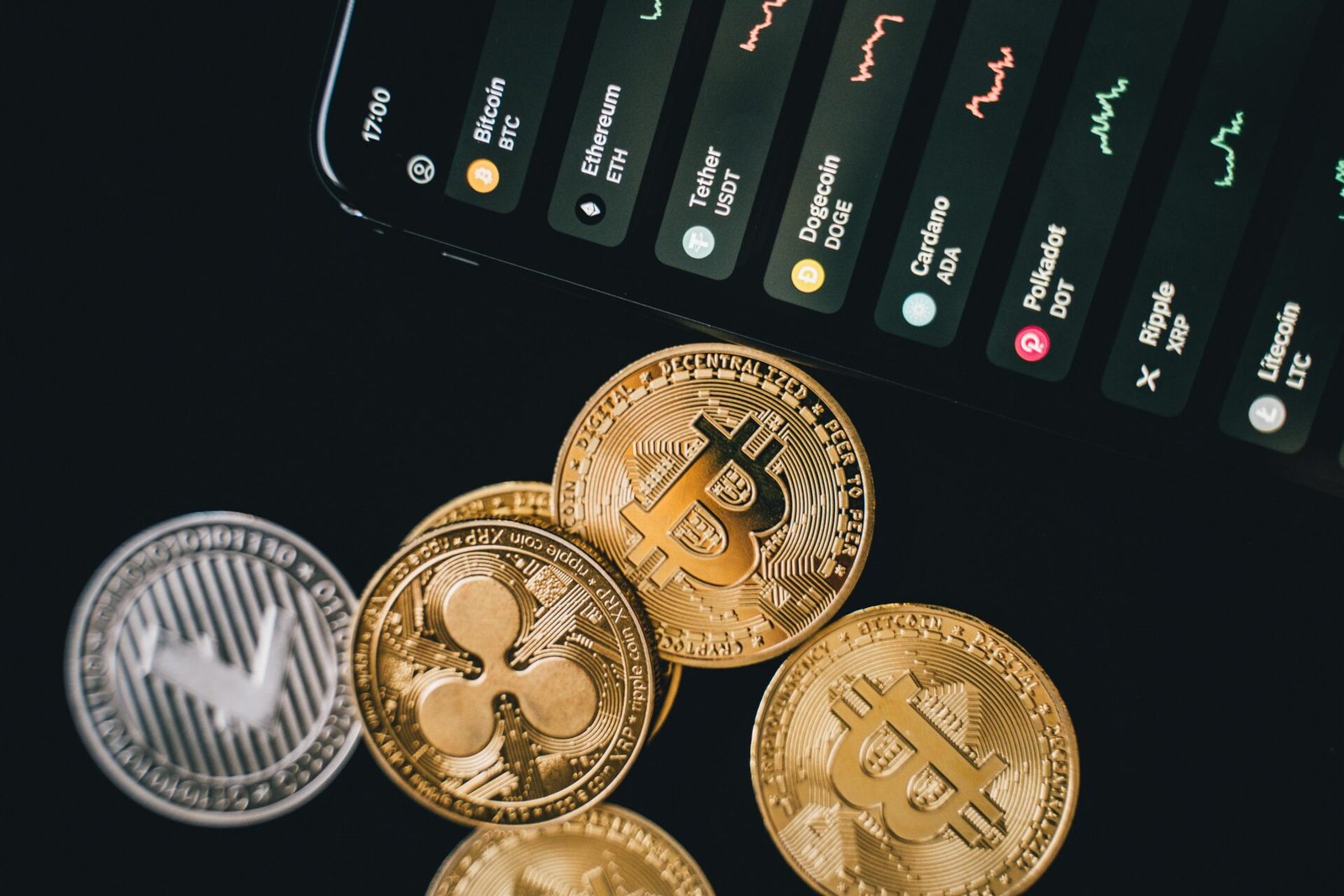Cryptocurrency trading and investing can feel like stepping into a vast, unpredictable ocean. The waves of volatility crash hard, and the winds of market sentiment shift constantly. For those who want to navigate these waters successfully, diversification is not just a buzzword—it’s a survival strategy. Building a balanced portfolio isn’t about chasing every hot coin or blindly spreading funds; it’s about creating a mix that aligns with your goals, risk tolerance, and market understanding. Let’s dive into the art and science of diversifying your crypto holdings, with practical tips and insights to help you thrive in this dynamic space.
Why Diversification Matters
Imagine putting all your savings into a single cryptocurrency. If that coin skyrockets, you’re a genius. But if it crashes? You’re left holding the bag. Cryptocurrency markets are notoriously volatile, and no project—no matter how promising—is immune to sudden drops. Diversification helps mitigate risk by spreading investments across multiple assets. When one coin underperforms, others in your portfolio might balance things out. It’s not about eliminating risk entirely (that’s impossible), but about managing it intelligently.
Diversification also allows you to capture opportunities across different sectors of the blockchain ecosystem. Some coins excel in payments, others in decentralized finance (DeFi), gaming, or data storage. By allocating funds across various niches, you increase your chances of riding the next big wave without being overly exposed to any single trend.
Step 1: Assess Your Risk Tolerance
Before you start picking coins, take a hard look at your risk appetite. Are you someone who can stomach wild price swings, or do you prefer stability? Your tolerance will shape how you allocate funds.
For conservative investors, a larger portion of the portfolio might go into established cryptocurrencies like Bitcoin (BTC) and Ethereum (ETH). These are the blue chips of the crypto world—less volatile than smaller altcoins, though still far from “safe” in the traditional sense.
If you’re more adventurous, you might allocate a higher percentage to emerging projects with high growth potential. Just remember: higher reward often comes with higher risk.
Step 2: Divide Your Portfolio by Market Cap
One effective way to diversify is by splitting your investments across coins with different market capitalizations:
- Large-Cap Coins: These are the giants of the crypto world—Bitcoin, Ethereum, Binance Coin, and similar projects. They’re less likely to deliver 100x returns but are generally more stable. Allocate a significant portion here if you’re risk-averse.
- Mid-Cap Coins: These projects have proven themselves but aren’t yet household names. Think of coins like Polkadot (DOT), Chainlink (LINK), or Avalanche (AVAX). They offer a balance between growth potential and relative stability.
- Small-Cap Coins: The riskiest and most volatile category, small-cap coins can deliver massive gains—or wipe out your investment entirely. Allocate sparingly and only invest what you’re willing to lose.
By spreading funds across these categories, you create a portfolio that captures both stability and growth opportunities.
Step 3: Explore Different Sectors
The blockchain world is vast, with projects tackling a wide range of use cases. Diversifying across sectors ensures you’re not overly reliant on one niche. Here are some key areas to consider:
- Payments: Coins like Bitcoin, Litecoin, and XRP aim to revolutionize money transfers.
- DeFi: Projects like Uniswap, Aave, and MakerDAO power decentralized finance, enabling lending, borrowing, and trading without intermediaries.
- Smart Contracts: Ethereum, Solana, and Cardano lead the way in this sector, providing platforms for decentralized apps (dApps).
- Gaming and NFTs: Axie Infinity, Decentraland, and The Sandbox combine blockchain with gaming and virtual worlds.
- Data Storage: Coins like Filecoin and Arweave focus on decentralized data storage solutions.
Allocating funds across multiple sectors reduces the impact of any single industry downturn. For example, if DeFi faces regulatory pressure, your holdings in gaming or storage projects might still perform well.
Step 4: Consider Geographic and Regulatory Factors
Cryptocurrency adoption varies widely by region. Some coins are more popular in specific countries due to local regulations, cultural preferences, or technological infrastructure. For example, XRP has a strong presence in Asia, while Bitcoin adoption is booming in Latin America.
Diversifying geographically can help you tap into these trends. However, keep an eye on regulatory developments. A coin that thrives in one region might face bans or restrictions in another. Staying informed about global crypto policies will help you make smarter decisions.
Step 5: Don’t Forget Stablecoins
Stablecoins like USDT, USDC, and DAI might not offer explosive growth, but they play a crucial role in any portfolio. These coins are pegged to fiat currencies, providing a safe haven during market downturns.
Holding a portion of your portfolio in stablecoins allows you to take advantage of buying opportunities when prices drop. They also reduce overall volatility, giving you peace of mind during turbulent times.
Step 6: Rebalance Regularly
Diversification isn’t a one-and-done process. Market conditions change, and so does the value of your holdings. Over time, some coins might outperform, while others lag behind.
Rebalancing involves adjusting your portfolio to maintain your desired allocation. For example, if Bitcoin’s price doubles and now makes up 70% of your portfolio, you might sell a portion to reinvest in other assets.
Set a schedule for rebalancing—whether it’s monthly, quarterly, or after significant market events. This discipline keeps your portfolio aligned with your goals and reduces the risk of overexposure to any one asset.
Step 7: Research, Research, Research
In the fast-moving crypto world, knowledge is your best weapon. Before investing in any coin, dig deep into its fundamentals. What problem does it solve? Who’s behind the project? How active is its community?
Avoid FOMO (fear of missing out) at all costs. Just because a coin is trending on Twitter doesn’t mean it’s a good investment. Take the time to understand what you’re buying and why.
Use tools like CoinMarketCap, Glassnode, and Messari to analyze data and track trends. Join forums, follow reputable analysts, and stay updated on industry news. The more you know, the better equipped you’ll be to make informed decisions.
Step 8: Be Wary of Over-Diversification
While diversification is essential, spreading yourself too thin can backfire. Holding 50 different coins might seem like a good idea, but it becomes nearly impossible to track and manage them all effectively.
Focus on quality over quantity. A well-researched portfolio of 10-15 coins is often more effective than a scattered collection of dozens. Each asset should have a clear purpose and fit into your overall strategy.
Step 9: Keep Emotions in Check
Crypto markets are a rollercoaster. Prices can soar or plummet within hours, triggering fear, greed, or panic. Emotional decision-making is the fastest way to derail your portfolio.
Stick to your plan, and don’t let short-term volatility dictate your actions. If you’ve done your research and diversified wisely, trust the process. Remember: patience often pays off in the long run.
Step 10: Stay Flexible
The crypto space evolves rapidly. New projects emerge, old ones fade, and market dynamics shift constantly. A successful investor adapts to these changes.
Regularly review your portfolio and stay open to new opportunities. If a promising project aligns with your goals, consider adding it to your mix. Conversely, don’t hesitate to cut losses on underperforming assets.
Flexibility doesn’t mean abandoning your strategy—it means refining it as you learn and grow.
Final Thoughts
Diversifying your cryptocurrency portfolio is both an art and a science. It requires careful planning, ongoing research, and the discipline to stick to your strategy. While no approach can guarantee success, diversification significantly improves your chances of weathering market storms and capturing growth opportunities.
Remember: the goal isn’t to eliminate risk entirely, but to manage it in a way that aligns with your objectives. By spreading your investments across different coins, sectors, and regions, you create a portfolio that’s resilient, dynamic, and primed for long-term success.
So take the time to build a mix that works for you. Keep learning, stay curious, and embrace the journey. The crypto world is full of possibilities—go out there and seize them.




